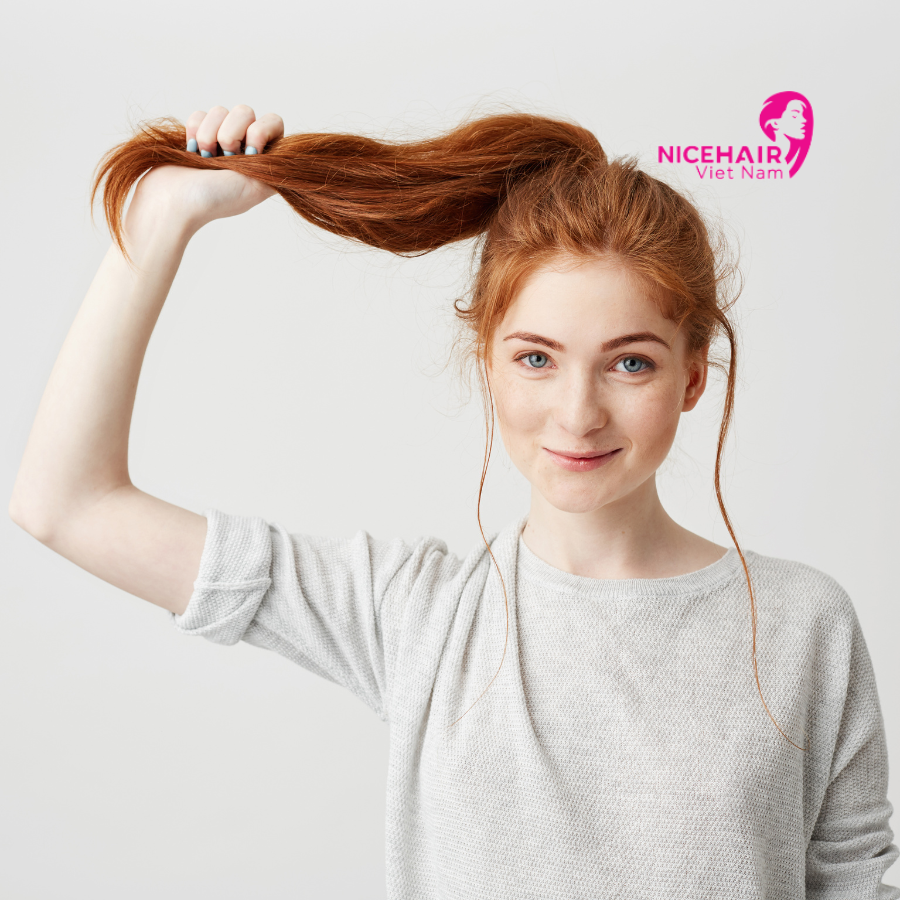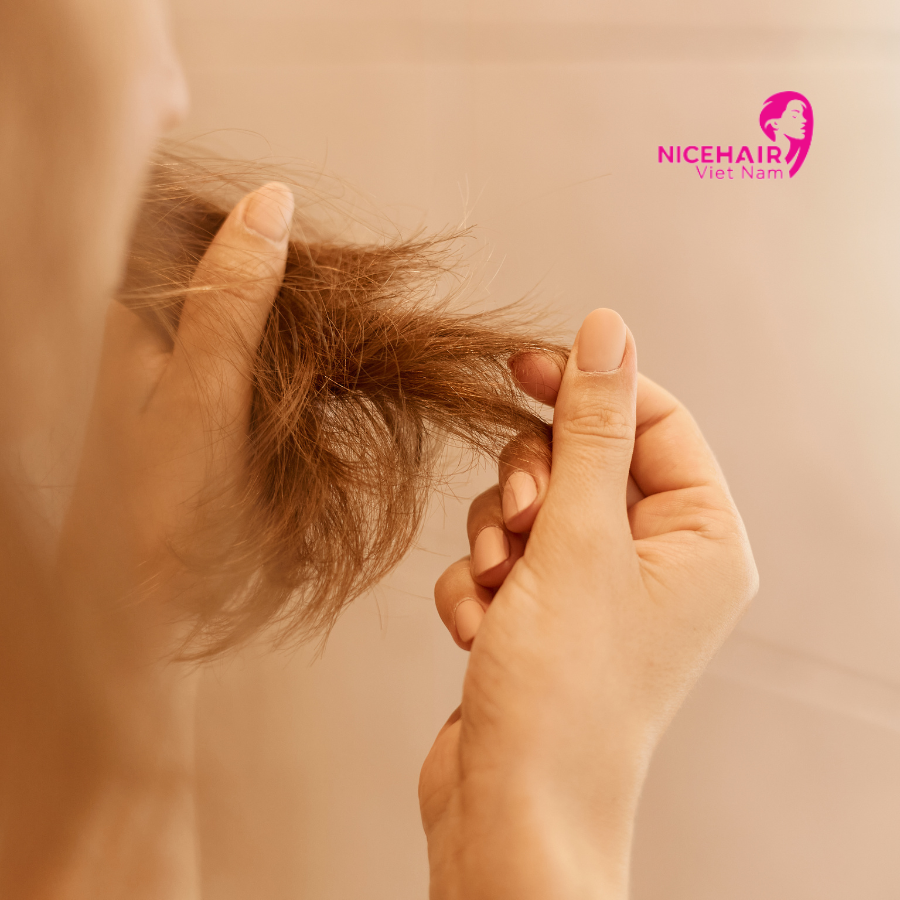Establishing a suitable hair care routine is of utmost importance, yet it doesn’t have to be complicated. By following a consistent regimen, you will witness noticeable improvements in the thickness and length of your hair.
Are you still on the quest for the perfect hair care techniques? Perhaps you’re considering transitioning to a more natural approach but feeling uncertain about where to start. In my experience, I firmly believe that simplicity is key. Establishing an effective hair care routine is of utmost importance, but it doesn’t have to be overwhelming. By adhering to a solid routine, you’ll witness remarkable transformations in terms of hair thickness and length. Let me guide you through 5 straightforward methods to help you establish a successful hair care routine.
Discovering Your Hair Type for Effective Hair Care
Understanding your hair type is the first step toward developing an effective and personalized hair care routine. Each individual’s hair is unique, and factors such as porosity play a significant role in determining the best care approach. Porosity refers to your hair’s ability to absorb and retain moisture, and it can be classified into three categories: low, medium, and high.

If you’re unsure about your hair’s porosity level, don’t worry! There are various tests available to help you determine it. One popular method is the “Hair Porosity Test.” By subscribing to our newsletter, you can gain access to a Free Ebook that provides detailed instructions on how to perform the test and interpret the results.
The Hair Porosity Test involves simple steps that allow you to assess how easily your hair absorbs and retains moisture. This information is vital because it will guide you in choosing the appropriate products and techniques to maintain optimal hair health. Understanding your hair’s porosity level will help you avoid using products that may be too heavy or not moisturizing enough for your specific needs.
Once you have identified your hair’s porosity, you can tailor your hair care routine accordingly. For example, if you have low-porosity hair, you may need to focus on techniques that enhance moisture absorption, such as using lightweight leave-in conditioners and incorporating steam treatments. On the other hand, if you have high porosity hair, your routine may involve sealing in moisture with heavier products and deep conditioning regularly.
By gaining a deeper understanding of your hair type and its unique characteristics, you can make informed decisions about the products, techniques, and treatments that will work best for you. This knowledge will empower you to create a hair care routine that promotes hair health, enhances its natural beauty, and addresses any specific concerns you may have.
Remember, your hair is as unique as you are, and taking the time to understand its needs will lay the foundation for a successful hair care journey. So, why wait? Discover your hair’s porosity level today and embark on a transformative hair care experience that is tailored to you. Subscribe to our newsletter and access the Free Ebook on the Hair Porosity Test to kick-start your hair care routine confidently.
Revitalizing Your Locks
When it comes to conditioning and shampooing your hair, it’s important to choose products that cater to your specific needs. Look for silicone- and sulfate-free shampoo, as these ingredients can be harsh and strip your hair of its natural oils. Opting for a gentle shampoo will help maintain the health and integrity of your hair.
During the shampooing process, using your fingertips instead of your nails to massage the shampoo into your scalp is advisable. This gentle approach helps stimulate blood circulation and promotes a healthy scalp environment. Avoid vigorous scrubbing or excessive rubbing, as this can lead to tangling and damage.
While some individuals prefer to wash their hair every two weeks or even once a month, others, like myself, find that washing their hair once a week works best. Find a frequency that suits your hair type and lifestyle. Remember, it’s essential to strike a balance between maintaining cleanliness and preserving your hair’s natural oils.
Co-washing, which involves using conditioner as the sole cleansing agent, is a technique that some people choose to follow. While it may work for some, it may not be suitable for everyone. I tried co-washing for two months but found that my scalp needed the cleansing properties of shampoo to feel refreshed. Listen to your hair and scalp’s needs and adjust your routine accordingly.
Deep conditioning is vital in any hair care routine, especially for those looking to combat breakage and dryness. When I first began my hair journey, I would deep condition my hair once a week. This regular practice helped nourish and hydrate my strands. However, as my hair grew healthier and stronger, I found that deep conditioning once or twice a month after a hair wash was sufficient.
To enhance the effectiveness of deep conditioning, I utilize heat. Using a hooded dryer and a plastic lid, I apply heat to my hair while the deep conditioner is on. This process helps the conditioner penetrate deeply into the hair shaft, providing maximum hydration and nourishment. However, it’s important to note that not all hair types may require heat during deep conditioning, so adapt this step based on your hair’s needs.
Incorporating conditioning and shampooing into your hair care routine is essential for maintaining healthy and beautiful hair. By selecting suitable products, finding a washing frequency that works for you, and incorporating deep conditioning with or without heat, you can ensure that your hair receives the nourishment and care it deserves. Remember, every hair journey is unique, so don’t be afraid to experiment and adjust your routine until you find what works best for your hair.
Nourishment from Within

Mastering the art of moisturizing your hair may require some experimentation and patience. For me, I have found that moisturizing my hair twice a day yields the best results. Not only does it feel amazing on my hair, but it also keeps my strands hydrated throughout the day. Here’s my moisturizing routine:
In the evening, I start by spraying my hair with distilled water infused with a small amount of leave-in conditioner. This helps to replenish moisture and restore hydration to my hair’s texture. The distilled water provides a pure and gentle base, while the leave-in conditioner adds extra nourishment.
After spraying, I follow up by applying a moisturizing cream or lotion. This step helps to seal in the moisture and provides my hair with essential nutrients. I make sure to distribute the product evenly throughout my strands, focusing on the ends where moisture tends to escape more easily.
To further lock in the moisture, I use raw shea butter as a sealant. Shea butter is a natural emollient that not only helps to retain moisture but also adds a layer of protection to my hair. I warm a small amount of shea butter between my palms before gently applying it to my hair. This step ensures that my strands remain hydrated and guard against environmental factors that can cause dryness.
In the morning, I refresh my hair by using my spritz mixture, which consists of distilled water and a few drops of my favorite moisturizing product. I lightly mist my hair to awaken and rehydrate it, reviving the moisture from the previous evening. To seal in the moisture and maintain hydration throughout the day, I apply a small amount of shea butter, focusing on the ends of my hair.
Additionally, when my hair is freshly washed, I incorporate the LOC (Liquid, Oil, Cream) technique. This technique involves applying a liquid (such as water or a water-based leave-in conditioner), followed by oil (like natural oils such as coconut or olive oil), and finally sealing it all in with a cream or butter. This layering method ensures that my hair receives maximum moisture and hydration, leaving it soft, manageable, and healthy.
Moisturizing is a crucial step in any hair care routine, as it helps to combat dryness, breakage, and overall hair damage. By finding the right combination of products and techniques that work for your hair, you can achieve optimal hydration and maintain healthy, beautiful strands. Remember, consistency is key, so make moisturizing a regular part of your daily hair care regimen to see long-lasting results.
Untangle your hair

Untangling your hair can be a time-consuming task, especially if your hair is prone to tangling. It’s important to approach the process with care and caution. Avoid attempting to detangle your hair when it’s overly dry, as this can lead to breakage. Instead, add moisture to make your hair more supple. I’ve found that using shea butter or olive oil helps to create slip and soften my hair.
Since my hair is thin and delicate, I avoid detangling it when it’s soaking wet. Wet hair is more prone to breakage, so I prefer to wait until it’s slightly damp. You can use your fingers or a comb with wide teeth when it comes to the tools. Take your time and be patient as you work your way from the ends to the roots. As someone with easily tangled hair, I dedicate a weekly session to untangling and keeping my hair knot-free.
Hairstyle for Protection
To protect your hair texture, there are various measures you can take. One option is to try out different hairstyles that minimize the need for constant manipulation. Bantu knots, flat twists, cornrows, twists, turbans, and braids are all great choices. However, it’s important to ensure that these styles are not too tight, especially when it comes to braids. Maintaining a balance between protection and comfort is key to safeguarding your hair texture.
Conclusion
In conclusion, establishing a hair care routine is a personal journey that requires some experimentation. Each individual’s hair is unique, so it’s important to customize your routine based on your preferences and needs. Through trial and error, you will gradually discover what works best for your hair. Remember to be patient with yourself and embrace the process of finding the right products, techniques, and habits that will keep your hair healthy and beautiful. With consistent effort and a willingness to adapt, you can create a hair care routine that suits you perfectly.
Contact us
+ Website: nicehairvietnam.com
+ Whatsapp: (+84) 846009647
+ Email: hakan@nicehairvietnam.com
+ Factory address: Factory No1, Dong Tho’s Street Zone, Yen Phong Dist., Bac Ninh Province, Vietnam.
+ Office: No.25 Tho Thap Ward, Dich Vong Hau Ward, Cau Giay District, Hanoi City, Viet Nam.

